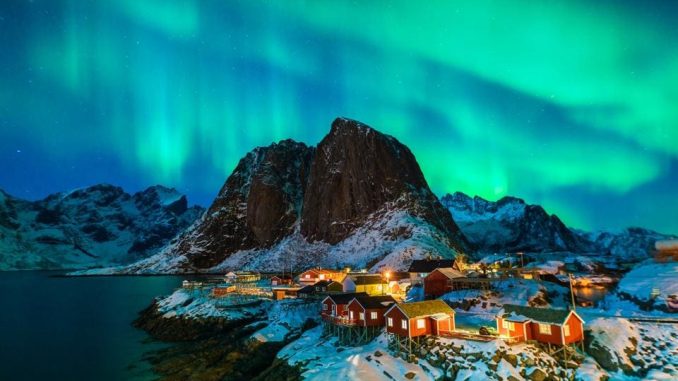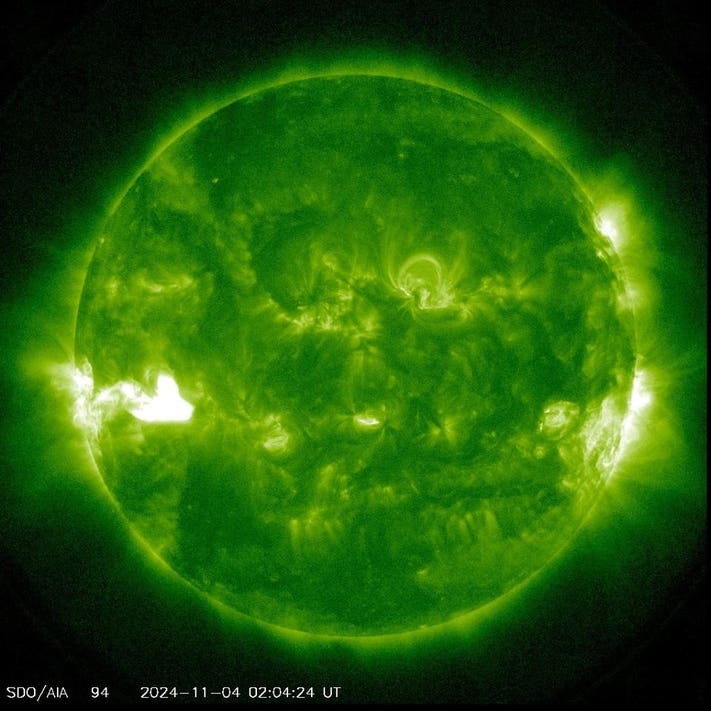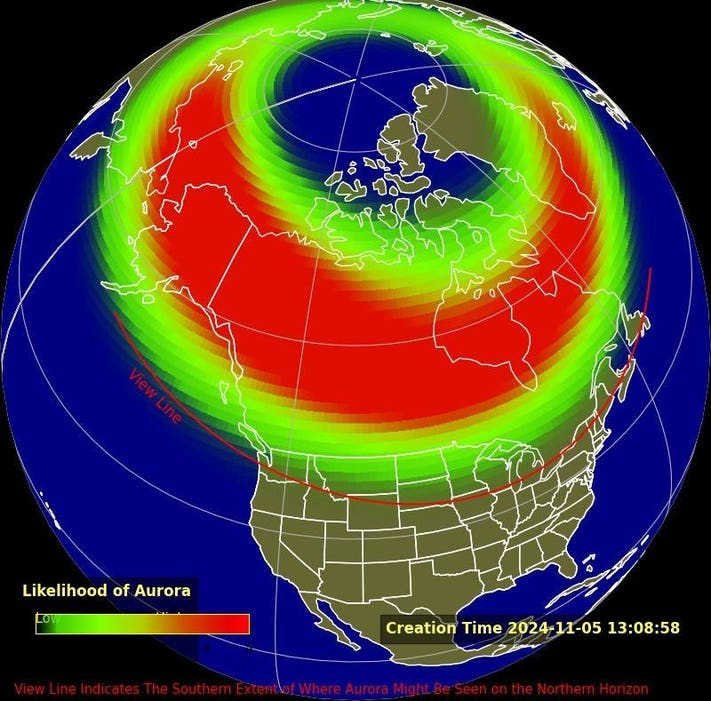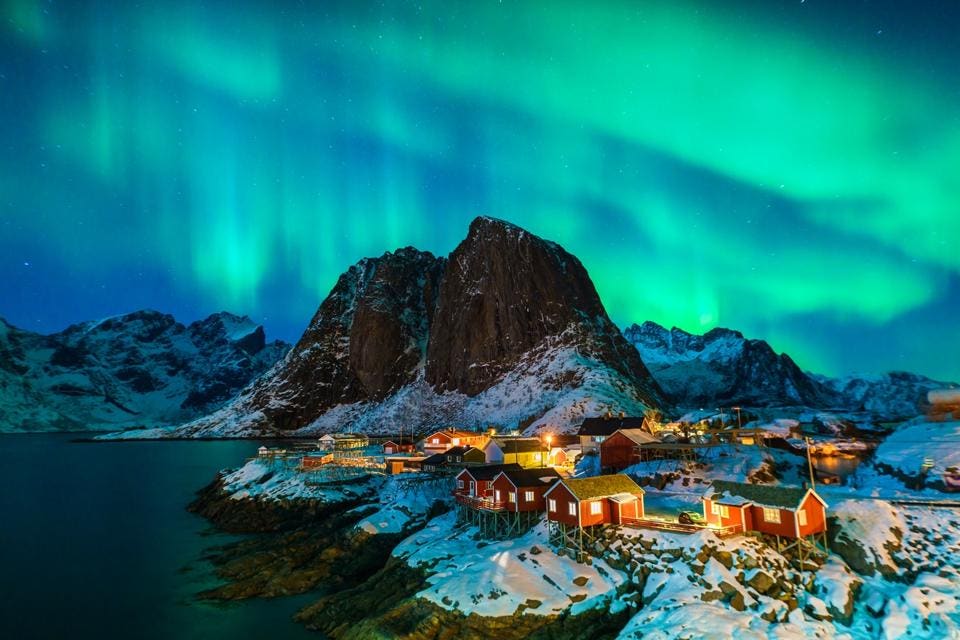
Northern Lights Update: These States Would See The Aurora Dazzling Tonight As Geomagnetic Storm Forecast
Where will the Northern Lights be visible tonight? The Northern Lights may be seen during the evening of Wednesday, Nov. 6, in the continental U.S. after space weather forecasters predicted favorable geomagnetic storm conditions.
It’s the result of a coronal mass ejection — a cloud of charged particles hurled in Earth’s direction from the sun — in the wake of a M3.8-class solar flare on Sunday, Nov. 3.
The National Oceanic and Atmospheric Administration’s Space Weather Prediction Center is forecasting that a G1 geomagnetic storm will make aurora visible in clear skies from northern-tier U.S. states.
The Northern Lights will likely be brightest in Washington, Idaho, Montana, North Dakota, South Dakota, Minnesota, Wisconsin, Michigan and Maine.

Where To See The Northern Lights
A G1 geomagnetic storm is being forecast, which generally means that aurora is seen from a “viewline” that could drop as far south as Washington, Idaho, Montana, North Dakota, South Dakota, Minnesota, Wisconsin, Michigan and Maine. However, in practice, it could turn out to be a stronger G2 geomagnetic storm. That would mean aurora is seen as far south as New York and Idaho.
Where To See The Northern Lights
A G1 geomagnetic storm is being forecast, which generally means that aurora is seen from a “viewline” that could drop as far south as Washington, Idaho, Montana, North Dakota, South Dakota, Minnesota, Wisconsin, Michigan and Maine. However, in practice, it could turn out to be a stronger G2 geomagnetic storm. That would mean aurora is seen as far south as New York and Idaho.
When To See The Northern Lights
NOAA’s forecast time for the beginning of the G1 geomagnetic storm is 00-03 UTC, which translates to 7-10 p.m. EST, 6-9 p.m. CST, 5-8 p.m. MST and 4-7 p.m. PST. The predicted displays of aurora borealis have predicted Kp index of 5, which refers to the magnitude of the geomagnetic storm.
The Kp Index has a scale of 1 to 9; the higher the number, the farther south the aurora can be seen. According to NOAA, Kp 5 means “the aurora will move further from the poles, it will become brighter, and there will be more auroral activity … if you are in the right place, these aurora can be quite pleasing to look at.” In the hours after the G1 geomagnetic storm, the index slips to Kp 4.33 for three hours, then to Kp 4 for three hours, rising again to Kp 4.33 later.

Where To Check The Aurora Forecast
Space weather is unpredictable, and the forecast can change quickly. Skywatchers are advised to check NOAA’s aurora view line, which is available for tonight and tomorrow night, and its 30-minute forecast, where the latest forecasts are posted.
Reliable space weather experts on social media include Dr. Tamitha Skov, Dr. Ryan French, Sara Housseal on X, and Wil Photography on Facebook. Useful apps for smartphones include Aurora Now, Hello Aurora and Aurora.

How To Photograph The Northern Lights
The Northern Lights generally look brighter and more colorful in a photo than they do in reality — particularly if you observe from a light-polluted area. Engage “Night Mode,” which will be good enough to get a more impressive souvenir shot of the aurora. It likely means a long exposure of between five and 10 seconds, so use a tripod or balance your smartphone on something to keep it as still as possible.
What Causes The Northern Lights
The solar wind — a stream of charged particles from the sun interacting with Earth’s magnetic field — causes the Northern Lights. As charged particles strike Earth’s magnetic field, they accelerate down its magnetic field lines at the north and south poles to create ovals of green and red. During extreme geomagnetic conditions, the auroral oval can bulge, with displays then seen sometimes as far as 25 degrees north and south.
With the sun now in its “solar maximum” period, frequent solar flares and CMEs will likely continue through until 2026.
Wishing you clear skies and wide eyes.
Leave a Reply